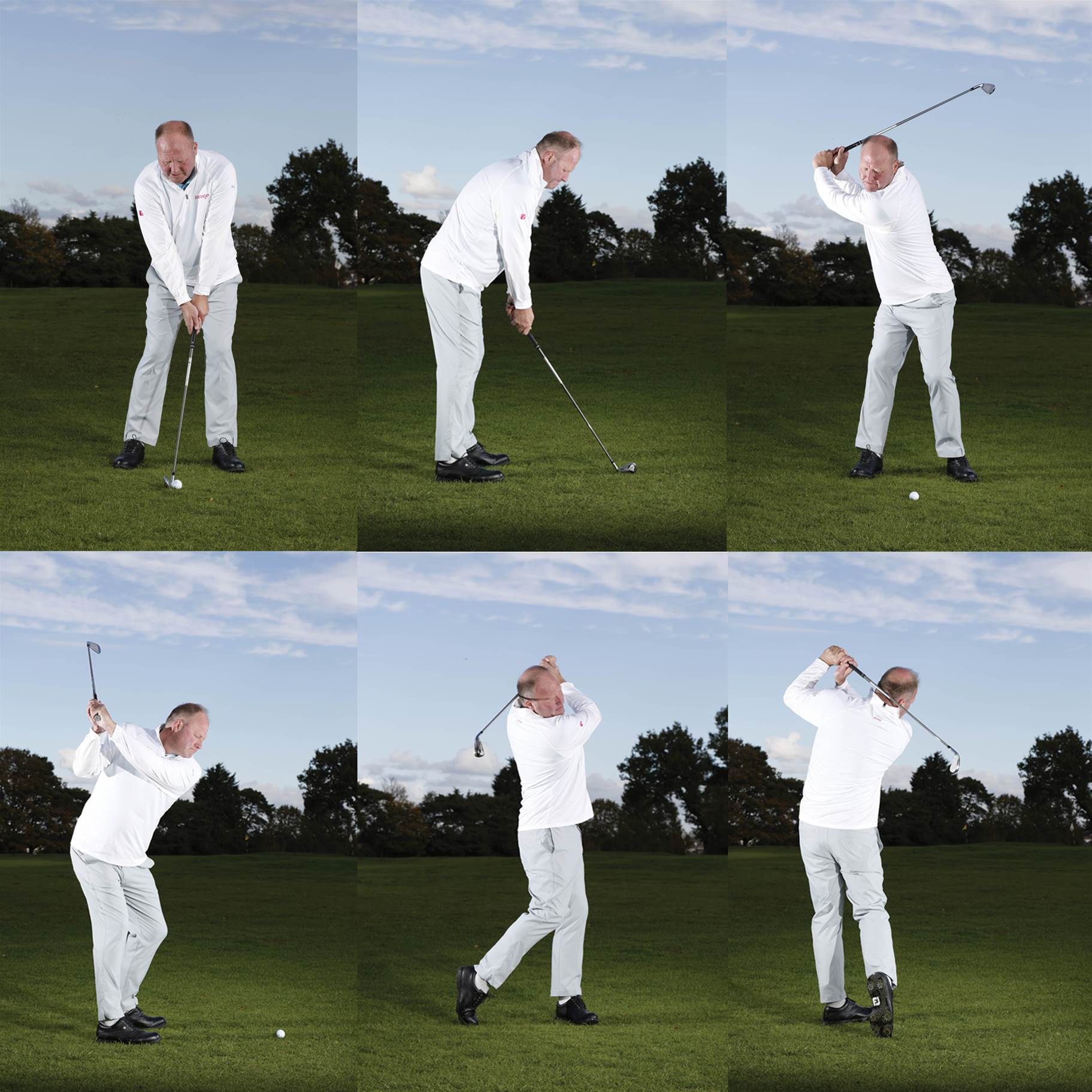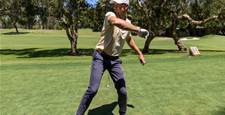Tired of a golf game where your niggling back or hip dictates how you swing from round to round? English professional Reeves Weedon believes the best way to avoid golf injuries is to change the focus of your swing and has developed the ‘Lower Body Swing’ with outstanding results.
Back in 2014, London golf pro Reeves Weedon was watching a television interview in which Jack Nicklaus was giving his thoughts about the modern golf swing.
The Golden Bear, one of the game’s longest hitters, was lamenting that rhythm had been sacrificed in the quest for power and, in doing so, swings such as the X-Factor (where a player tries to minimise hip turn and maximise shoulder turn) had created a generation of players, including Tiger Woods, who were prone to back injuries:
“A lot of the swings are far more violent at the ball,” Nicklaus observed. “The game is far more an upper body game today, and we used to play more from the ground up. I only had one operation when I played, and that was for a knee injury I got playing tennis.”
Weedon couldn’t believe what he was hearing. He’d been working on a simple but radical approach to the golf swing for more than a decade and the words of Nicklaus were music to his ears. A few days later he fired off an email to his Florida office:
“Dear Mr. Nicklaus, I have heard you say that you are concerned that the modern golf swing does not sufficiently focus on using the ground. I have been investigating ground forces in the golf swing and thought you might be interested to know that our data supports your view. I would welcome an opportunity to show you our research in more detail, and to get your ideas about how we should extend our research.”
It took only three days to get a response: “On behalf of Jack Nicklaus, thank you for sending along the information,” his private secretary Rose Garrido wrote. “While Mr Nicklaus appreciates your offer to show him the results of your research, he happens to agree with your viewpoint and, therefore, a demonstration would not be necessary. Best regards for continued success.”
Nicklaus is not alone in his concerns about injuries attributed to swings such as the ‘X-Factor’, which uses a lateral weight shift that creates massive torque on the spine and has been blamed for injuries to well-known players like Woods, Rory McIlroy, Justin Thomas and our own Jason Day amongst others.
Phil Mickelson, speaking at the 2016 Masters, also pointed to the dangers: “A lot of young guys get hurt as they create this violent, connected movement, and I don’t believe that’s the proper way to swing a golf club.”
And the problem has filtered through to the amateur and recreational ranks as golfers, trying to emulate their heroes, bend and twist against the laws of biometrics to find ‘lag’ and clubhead speed. In the United States alone, there are an estimated 50 million rounds lost each year to back injuries.
THE MODERN SWING
These are the key positions of the modern swing. The shoulders turn 90 degrees, while the hips turn 45 degrees to the target line, creating torque (pics 3 & 4). The weight is on the right side with both knees flexed, whilst the glutes (the biggest muscles in the body) have moved very little. The golf club is more upright than the Lower Body Swing (see next image). The lateral shift (side-to-side motion) during the swing inflicts massive torque on the lower back.

Weedon believes he has the answer. He calls it the “Lower Body Swing”, and five years after his email exchange with Nicklaus he now has scientific research to back his theories.
In July, the results of a three-year research project conducted by the College of Human Medicine at the Michigan State University were presented to the 37th International Society of Biomechanics in Sports conference in Ohio.
Noting that there had been very few studies to compare various swing techniques, it concluded: “Abnormal biomechanics have been highlighted as a major cause of injury. One potential method that could ameliorate spinal loads while maintaining or even improving performance could be to increase lower body motions to produce the necessary rotational characteristics while minimizing spinal forces. This ‘lower body’ style swing has the potential to produce similar spinal loading characteristics to that of the ‘classic’ style but performance benefits seen from the ‘modern’ style.”
Weedon’s concept is ‘Back to the Future’ in some senses, by reverting to a swing that focuses on the techniques of golfers like Nicklaus, Ben Hogan, Slammin’ Sammy Snead and Arnold Palmer:
“Look at those swings,” he says producing a file of largely black and white photographs. “Look at their bent knee position. They were using the ground. They had to hit the ball hard to make the ball go further but modern golf equipment does the work for you. It should now be about swinging with efficiency and that means using the biggest muscles available – the legs.
“The fact is that as people grow older they lose their upper body strength, but they do not lose their ability to walk or run."
“The fact is that as people grow older they lose their upper body strength, but they do not lose their ability to walk or run. The legs stay stronger by comparison, so it makes sense to focus the swing on those muscle groups.
“Women are much weaker in their upper bodies, by comparison to men, than their legs so, again, doesn’t it make sense for them to use their strongest assets – their legs - rather than make a swing based on their upper torso?”
Dr Bryan Dixon, the long-time US Olympic wrestling and weightlifting doctor from the Michigan State University College for Human Medicine, described Weedon as a free-thinker who should be taken seriously:
“Mr Weedon’s iconoclastic ideas and willingness to subject his theories to critical scientific appraisal make him a singular figure in the industry. His commitment to the rigorous and often tedious process of scientific research has placed him at the forefront of not just the biomechanics of the golf swing but also the pathomechanics of golf related injuries. His insights on the golf swing have become the basis of an ongoing international research project that has the potential to revolutionize golf performance, pedagogy and injury prevention.”
***
Related Articles

Rory then Day-light, but Aussie still has hope

Hero World Challenge field spotlights Australian Open hurdle and OWGR prospects












